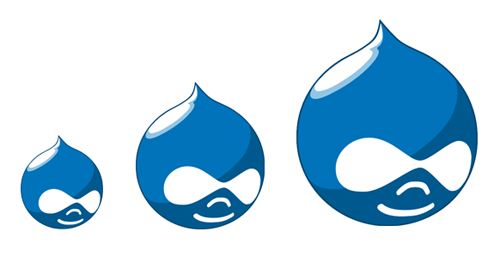Typography, which refers to the art of arranging text and letters to make written language readable, legible, and appealing, stands as a cornerstone in both print and digital mediums. The selection of fonts plays a pivotal role in communicating the intended message effectively.
In light of this, the choice of fonts for print and digital platforms requires distinct considerations due to the inherent differences between the two mediums.
Here’s what you need to know.
Understanding the Mediums
Print: The Tangible Expression
Printed materials, such as books, magazines, and brochures, offer a tangible and static reading experience. Fonts in print need to ensure readability at different sizes without relying on the dynamic nature of digital screens. Serif fonts, like Times New Roman or Garamond, often excel in print due to their readability in longer texts.
Digital: The Dynamic Interface
Conversely, digital platforms encompass websites, apps, and e-books, where fonts encounter various screen sizes and resolutions. Here, sans-serif fonts like Arial or Roboto often dominate due to their readability on screens and adaptability across devices.
Factors Influencing Font Selection
Legibility and Readability
Print: In print, font size and type directly impact readability. Fonts with well-defined serifs aid in prolonged reading sessions, enhancing readability in print materials like books or newspapers.
Digital: On digital platforms, factors like screen resolution and font responsiveness matter. Sans-serif fonts with clean lines and ample spacing tend to render better across various screens, ensuring legibility on different devices.
Brand Identity and Tone
Print: Printed materials often represent the brand’s identity and tone. Serif fonts may connote tradition, formality, or reliability, while script fonts might evoke elegance or creativity, aligning with the brand’s essence.
Digital: Similarly, on digital platforms, fonts become integral to establishing brand identity. However, the choice leans towards fonts optimized for screens, ensuring consistent representation across devices.
Function and Purpose
Print: The purpose of the printed material dictates font selection. For instance, body text in a novel might benefit from a serif font for readability, while a poster might opt for bold, attention-grabbing sans-serif fonts for headlines.
Digital: Functionality drives font choices in the digital realm too. Websites prioritize fonts that load quickly and remain clear at various sizes to accommodate different screen dimensions and user preferences.
Guidelines for Font Selection
Consistency Across Mediums
Maintaining consistency in font usage across print and digital mediums strengthens brand recognition. While the font might slightly vary for each medium, a coherent font palette preserves the brand’s identity.
Scalability and Adaptability
Fonts must be scalable and adaptable. In print, fonts should maintain clarity at different sizes, while on digital platforms, they need to be responsive, adjusting seamlessly to diverse screen resolutions.
Accessibility Considerations
Both print and digital typography demand accessibility. In print, font size and contrast ensure readability for all audiences. Digital platforms require compliance with web accessibility standards, employing fonts with adequate contrast and adaptable sizing.
Emotional and Psychological Impact
Print: Fonts evoke emotions and perceptions. Serif fonts may convey tradition and reliability, while decorative fonts might express creativity or playfulness, affecting how readers perceive the content.
Digital: Understanding the psychological impact of fonts is vital. Certain fonts might resonate differently with digital audiences, influencing user experience and engagement.
Typography Hierarchy
Print: In printed materials, establishing a clear typographic hierarchy aids in guiding readers through the content. Employing various font sizes, weights, and styles helps differentiate headers, subheadings, and body text, enhancing readability.
Digital: Similarly, on digital platforms, a well-defined hierarchy ensures easy navigation and readability. Consistent use of font sizes and styles helps users quickly scan and comprehend content.
Responsive Typography in Digital Design
With the advent of responsive web design, font choices must adapt seamlessly to different screen sizes and orientations. Employing fluid typography ensures readability and aesthetics across various devices, enhancing the user experience.
Cultural Considerations
Different cultures attribute varying meanings to fonts. When designing for diverse audiences, understanding cultural connotations associated with certain fonts helps avoid unintended misinterpretations and ensures effective communication.
Practical Examples
Print Example: Book Typography
When selecting fonts for a printed book, consider the text’s nature. Body text benefits from serif fonts for prolonged reading, while sans-serif fonts might suit chapter titles or headings, offering contrast and visual appeal.
Digital Example: Website Typography
For website typography, prioritize readability and responsiveness. Choose fonts compatible across devices and screen sizes. Employ sans-serif fonts for body text, ensuring easy consumption, while using distinctive fonts for headers or branding elements to maintain uniqueness.
Choose the Perfect Fonts for Each Medium
The art of choosing fonts wisely for print and digital mediums involves a delicate balance between aesthetics, functionality, and communication. While the principles of legibility, consistency, and scalability remain constant, adapting font choices to the unique demands of each medium is crucial for effective communication and brand representation.
In a world where content is consumed across diverse platforms, understanding the nuances of typography for print versus digital realms empowers designers and creators to wield fonts as powerful tools in conveying messages with impact and clarity.
Author Bio:
Greg Costaras
With over 25 years of experience in print design and production, Greg has established himself as a recognised individual within the printing industry in Australia. Throughout his extensive career, he has successfully worked with thousands of clients to fulfill their print projects. What sets Greg apart is his unparalleled ability to understand clients’ exact requirements and consistently deliver solutions that don’t just meet expectations, but indeed exceed them.





